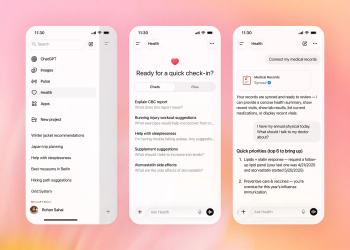
Perspective: Technology, life issues altering what it means to be a physician
Jay Wolfson, DrPH, JD, is the Distinguished Service Professor of Public Health and Medicine and associate vice president for health law, policy, and safety at the University of South Florida in Tampa. He recently spoke with Medical Economics Editor-in-Chief Lois A. Bowers, MA, about the ways in which your future colleagues are being educated-and why.
Jay Wolfson, DrPH, JD, is the Distinguished Service Professor of Public Health and Medicine and associate vice president for health law, policy, and safety at the University of South Florida in Tampa. He recently spoke with Medical Economics Editor-in-Chief Lois A. Bowers, MA, about the ways in which your future colleagues are being educated-and why.
Q: At the University of South Florida (USF), health professions students in various fields are all together in class at the beginning of their education. How is this preparing them for the changing healthcare environment?
A: Lack of communication is the single leading cause of adverse events occurring in patient safety problems. This can be improved if you start early, if you get physicians talking to each other, talking to nurses, talking to pharmacists, talking to patients.
USF Health is a combination of the colleges of medicine, public health, nursing, pharmacy, the physical therapy program, and the practice plan, which has 450 physicians. We’ve brought all of these clinical disciplines together to work, and in doing that, we’ve developed joint curricula. It’s been a special opportunity to integrate across the clinical disciplines at the training level, undergraduate medical education, and the residency programs, and then continuing medical education.
We have to transform the way we structure our medical schools. The physician of 2025 is not going to be the same as the one in 1955, for a whole lot of reasons.
At USF, we collapsed all basic science departments into one, and we’re redefining the way we do things functionally in terms of the way we train our students. We’re restricted still in terms of what accreditation requirements are demanded of us, but we’ve also participated extensively in the accreditation process nationally and have been recognized as having some really innovative approaches to undergraduate medical education.
For instance, students used to get one course in pharmacology. Historically, doctors have relied on detail people to tell them which drug to give. That’s a thing of the past. We now rely extensively and substantially not just on the Internet but on PharmDs, who are trained to assist and work with doctors.
In the hospital setting, ambulatory setting, and places like the Villages (a large senior community in Florida), they have immediate access to a PharmD online or on the telephone, and we’ve also created interactive teams with healthcare professionals who care for the whole patient. Technology allows us to do it.
Q: How are the medical students of today different from those in the past? And how will these differences change the field of medicine?
A: As the 1960s and 1970s-trained cohort of physicians moves toward retirement, the younger physicians are really in a different landscape. More than 50% of my class is now women, and most of my seniors are saying, “I don’t want to work 90 hours a week. I want to have a life.”
Those are internists, family practitioners, and pediatricians, as well as specialists. So there’s a different tone among them.
I continue to have a concern, and in all my courses for medical students, I say, “Be careful not to become technicians. You’re not TV repair people.”
The professionalism component of what we do is what is more important than anything else. We have to engender trust. If we don’t, we’ve lost what it means to be a physician.
Newsletter
Stay informed and empowered with Medical Economics enewsletter, delivering expert insights, financial strategies, practice management tips and technology trends — tailored for today’s physicians.








